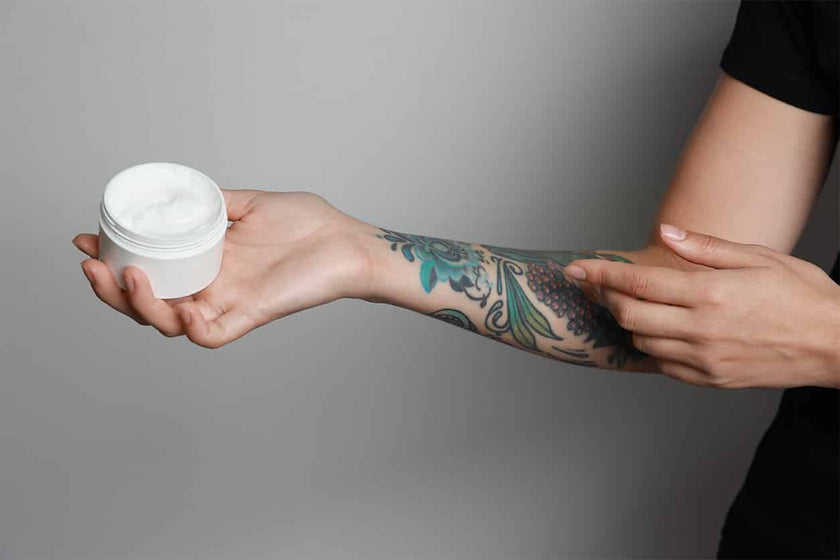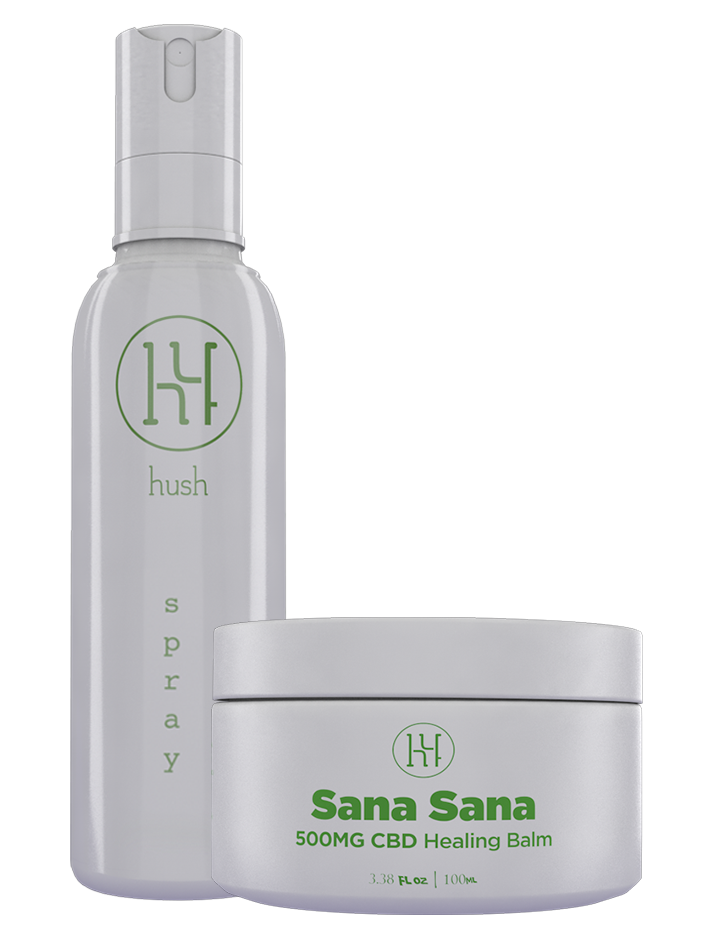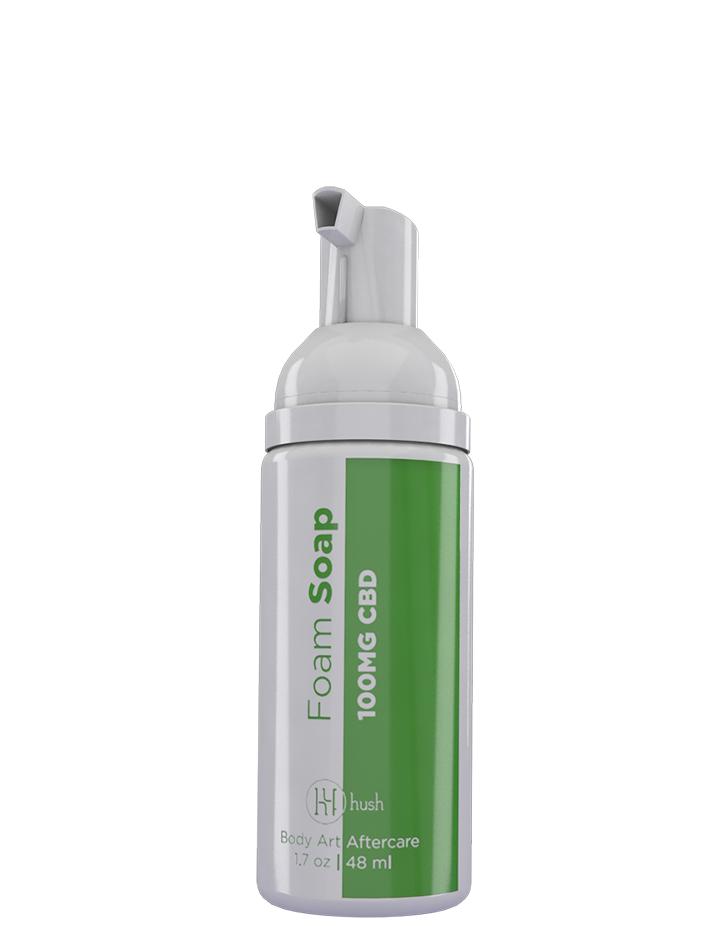Laser tattoo removal is a trending procedure popular among people who want to remove unwanted (or crappy-looking) ink almost anywhere on the body. We hate to break it to you — but the process doesn’t end when the ink is gone… lo siento. The good news is that a proper aftercare protocol can speed up the removal process! Keep scrolling to read everything you need to know about the healing process and tips on what to do at home for speedy skin recovery.
How To Care For Your Skin After Tattoo Removal
Your tattoo was something fierce when it was fresh, new, and marked in just the right spot. And then you and your now-ex went different ways. Now, you’re ready to reclaim your bare skin. While you’ll never truly have unmarked skin again, laser tattoo removal does a fine job of removing most, if not all, of the remnants of that old ink stamp, usually making it much easier to cover it up with something shiny and new. Here’s what you need to know about the aftercare steps following tattoo laser removal:
Moisturize
Keep your eyes peeled during the first few days after the tattoo removal. These days are crucial for eliminating possible skin infections during the healing process. Here’s what you should know:
-
Healing ointment or healing balm serves its purpose best during the first three days following the procedure. It provides a moisturizing shield over the tender area. But do not (and we mean do not) use any other makeup, creams, lotions, or ointments on the site for the first few days. Keep the area bandaged in sterile gauze for three days post removal, or follow your technician’s instructions.
-
After three days, remove the bandage and keep the area clean and dry as much as possible. Continue moisturizing the skin with a healing balm such as HUSH CBD Sana Sana healing balm. Vitamin E carries the benefit of skin cell renewal, so using an ointment or oil containing vitamin E also helps rebuild those poor, damaged skin cells.
-
Don't forget to wear an SPF of 30 or higher at all times when you are outdoors. After laser ink removal, your skin is delicate as ever, so protect it from the sun to prevent burns (ouch!) and other possibly dangerous skin conditions.
Can You Take a Shower After Laser Tattoo Removal?
Sorry, but you gotta wait until the skin heals completely before submerging it in water. That includes baths, swimming pools, hot tubs, saunas, or other open water areas. Avoiding submersion helps prevent skin infections — but that doesn’t mean you should skip out on your shower. Here’s what you need to know about showering after laser tattoo removal: After removing the bandage, you may shower and gently wash the area in lukewarm water. Do not use high-pressure water, as this may irritate or burn the skin. Sé gentil. Simply clean the area with a mild cleanser, such as HUSH CBD foam soap, and pat dry.
Keep Your Immune System Strong For Fast Healing
Work on keeping your immune system strong before and after the laser tattoo removal process. Your immune system helps ward off infections and speeds up recovery time. Here are a few things you can do to build your immunity:
-
Drink Water - Drinking adequate amounts of agua per day keeps your immune system strong and illness away. It also hydrates the body and skin from the inside out, promoting healthy skin, cells, and tissues.
-
Avoid Smoke - Smoke is pollution, and when a person smokes, their body must work overtime to attempt the removal of these toxins. Non-smokers see faster and better results from tattoo removal than smokers.
-
Limit Alcohol - Alcohol consumption causes dehydration, resulting in a slower immune response. Limit alcohol or avoid it altogether to support your body’s hydration.
-
Exercise - Exercise increases heart rate and blood flow, in turn increasing the rate at which the ink particles in your skin break down. Physical activity helps accelerate the healing process, but remember to take a few days of rest after the procedure to avoid sweat or other moisture from entering the site. The gym will wait for you!
-
Eat Healthy Foods - A healthy diet, along with adequate water intake and exercise increases immune system functioning, resulting in a happier, healthier, you.
-
Get Enough Sleep - Not getting enough rest affects the immune system negatively. Create a regular sleep routine by going to bed at the same time every night and waking up at the same time in the morning. Avoid stimulants such as blue light from a computer or tv, caffeine, and nicotine before bed.
How Many Tattoo Removal Sessions Do I Need?
Most people need between five and eight laser tattoo removal sessions before seeing results. Skin complexion affects this, along with the type of laser and technology that the technician uses. Treatments are usually spaced six to eight weeks apart but may take up to one year (yes, a whole year) to complete. Individual sessions last anywhere between 15 to 45 minutes, depending on how large the area is that is being treated. Consult with your technician before your treatment sessions begin so you know what exactly to expect, time and cost-wise.
How Long Does It Take a Tattoo Removal To Heal?
Healing time varies from person to person, and what you do during those weeks after the procedure really affects the healing rate. Usually, it takes four to eight weeks to completely heal from tattoo removal. Your efforts after the tattoo removal are just as important as the actual procedure itself. Protect the wound, keep it clean, and practice healthy habits to support your body’s healing process for a speedy recovery time.
What To Expect Immediately After the Tattoo Removal Session
It takes several weeks for the entirety of symptoms to subside; however, immediately after the procedure, experiencing the following skin conditions is completely normal:
-
Mild swelling is normal and usually subsides after a few days.
-
Redness occurs from the procedure itself and agitation around the skin from the laser.
-
Blistering usually develops eight hours after the tattoo removal procedure and disappears after six to eight days with proper tattoo removal aftercare.
-
Scabbing is common after a tattoo removal process. Do not pick at or remove scabs.
What Should I Avoid During Tattoo Removal Aftercare?
You must absolutely avoid the following actions if you want a quick heal time and the most effective results:
1. Avoid Excessive Sun Exposure
Your skin must be free of sunburns before every laser treatment, so keep the area to be treated away from the sun’s UV rays. If your skin is sunburned, your session may be delayed, meaning it will take longer for you to see results. The same goes for tanning. Always wear sunscreen and shield the area that is treated from the sun. After the laser session, your skin is sensitive, so it makes sense that you need to keep the area out of the sun. Get your tan on another time.
2. Don’t Pick the Scabs
Scabbing and blistering are natural side effects of having a tattoo removed. Avoid picking, peeling, or popping these areas at all costs. Shaving is another no-no. Reopening the wound results in a longer heal time and increases the chance of infection. Allow the scabs and blisters to do their thing naturally. Scabs fall off, and blisters drain on their own — they don’t need the extra “help” from you, homie.
3. Don’t Submerge Your Skin In Water
As discussed above, taking a shower is fine a few hours after the procedure, but bathing in a bathtub is not. Submerging your treated skin underwater sets you up for potential infection due to exposure to bacteria. The same goes for swimming, hot tubs, the gym, or anywhere else that requires exposure to excess water, moisture, or sweat. Keep it so fresh, so clean.
Does Laser Tattoo Removal Cause Scarring?
We’d love to tell you that scarring never happens, but that’s not true. Scarring occurs in less than two percent of people who have the procedure done. That is very minimal, and the scarring that does occur may be minimized with vitamin E oil or over-the-counter silicone scar patches. Again, scarring is not likely, but it is possible that the scarring you see may be from the actual tattoo itself. Scarring occurs in some people during their actual tattoo application. These scars tend to be less visible due to the ink color, but the scar is real and, unfortunately, does not go away during laser tattoo removal.
The Bottom Line
Following a tattoo removal aftercare protocol is crucial for a quick recovery time. Boost and support your immune system before and after the removal procedure, and follow the aftercare instructions your technician provides for you. Utilizing high-quality skincare products is a must in order to attain buzzworthy results. HUSH anesthetic tattoo numbing and aftercare products provide formulas designed for tattoo protection and aftercare, including cleaning. HUSH has all of your tattoo needs covered when it comes to your new tattoo or removing the old. Sources: Vitamin E in dermatology | NCBI.gov Get the Facts: Drinking Water and Intake | Nutrition | CDC Smoking, ink color affect laser tattoo removal | Atlanta Journal Constitution




